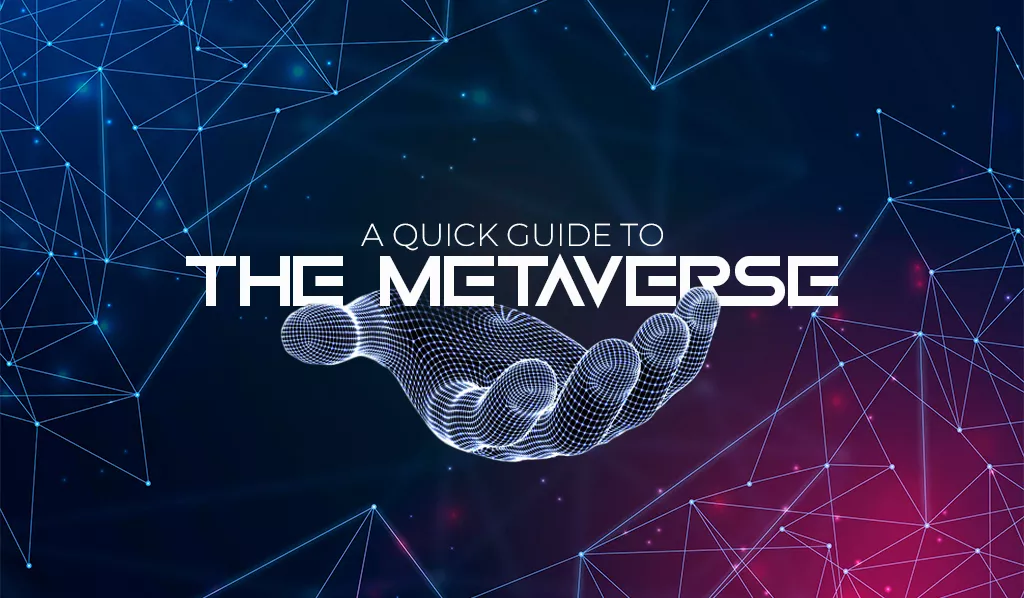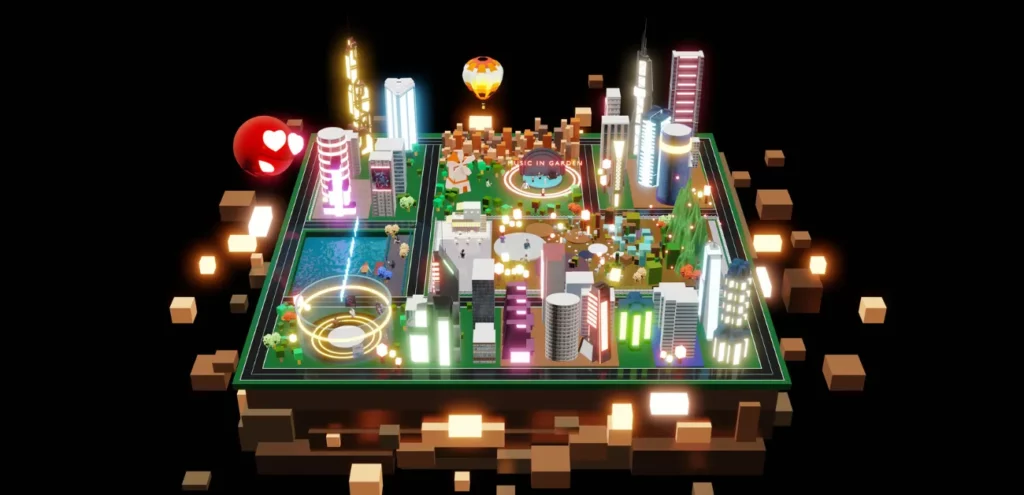“MetaModernism” captures the spirit of the modern era, which is best characterized by an attraction to all.
With particularly intriguing interconnections to Decentraland, the movement known as MetaModern Architecture aims to propagate its ideas throughout various Metaverses.
Since Covid-19 struck, many things have altered. These days, we lead hybrid lives. There have been numerous closures of retail stores and businesses. Several fashion houses, including Balenciaga, have presented their line as a video game. Global demand for video conferencing services is on the rise. The entire workplace has been completely upended, and the gaming, fashion, and cryptocurrency industries have served as the Metaverse’s stepping stones.
The following blogs cover the fundamentals and the most recent developments in Metaverse Architecture trends and projects to bring the topic to the fore. We hope it will serve as an overview and serve to motivate you.
What Is Metaverse?
The term “Metaverse,” which was coined as a replacement for the Internet and is based on Neal Stephenson’s notion of how a digital universe may soon evolve, was taken from his 1992 science-fiction book “Snowcrash.” The Metaverse is the virtual space where whatever we may imagine might exist. In the future, when we are always connected to the “metaverse,” we will be able to use our senses of sight, hearing, and touch in addition to mixing digital assets into the real world and entering fully immersive 3D settings whenever we want.
For the architects, constructing a digital duplicate of the real environment is like creating an “alternative universe”—a completely unknown realm of possibilities with no restrictions at all. A boom in digital architecture to create virtual venues like stadiums, meeting rooms, museums, or even an entire city, might result from the unfathomably vast demand for material in the Metaverse!

Metaverse Architecture: The Basics
Who will construct it? What is it, and why is it significant?
The term “Metaverse” was coined by Neal Stephenson as a replacement for the Internet and represents Stephenson’s vision of how a digital world might develop shortly.
Metaverse architecture is the process of creating structures in a fully interactive digital world where users may realistically interact with 3D models. It is impossible to avoid running across articles, chats, and open forums discussing the future of the Internet and the bold and aspirational “Metaverse” keyword in today’s digital ecosystem.
The technique of creating physical structures in a virtual, immersive world where users can interact with 3D models is known as Metaverse architecture. Architects in the Metaverse frequently redesign existing physical structures in the virtual world, such as buildings, monuments, or even your favorite workstation.

An Architect As A Bridge Between The Physical And The Virtual
Environment construction has traditionally been the responsibility of architects. Thanks to the expanding trend of creating digital twins in the AEC industry, architects can act as a link between the physical and virtual worlds. According to Autodesk, ” A digital twin is a dynamic, up-to-date replica of a physical asset, whether it is a building a campus, a city, a railway, that brings together design, construction, and real-time operational data.” Digital twins simulate, forecast, and provide information for decisions.
Using simulations, architects may create digital representations of actual situations to “test drive” unassembled buildings. A digital twin represents a building that tells its story throughout its lifespan using data from linked sensors.
Many applications in the Metaverse will store digital copies of real-world locations or scan data, such as point clouds and photogrammetry. Be creative in how you use the resources and develop interactions and experiences spanning the two realms.
The Metaverse’s Technological Underpinnings
Digital Twins
Digital twins virtually represent a physical asset by leveraging networked information sources, such as sensor data from drones, etc., to mimic real-world structures. With the help of this information, realistic open-source cities can be built, facilitating the creation of complex decisions.
A digital twin’s capacity to quickly change and adapt in response to user needs makes it so interesting. Interestingly, artists have already accomplished some elements of this reality, most recently with replicas of Shanghai and Singapore.
AR Cloud Technology
Architects using augmented reality (AR) cloud technologies can connect the real world and digital twins. Better visualization is possible using AR to overlay data onto surfaces like a tablet or smartphone. Smart glasses might also contribute more data to the digital twin to update users in real time as they engage with it.
Data Visualization
Visualizing global data becomes more difficult as its repository expands. This is primarily because of the limits of our present reporting and visualization tools; we simply lack the tools necessary to combine and make sense of six separate data sources.
When using the Web3 Metaverse, it is possible to view numerous data dimensions simultaneously and interact with them using conventional devices. Users might choose virtual reality (VR) headsets as another option to promote a more collaborative setting free from interruptions. The next level of innovation can be unlocked by using actionable customer insights gained from this level of data visualization.

The Metaverse Architecture’s Potential Business Models
Smart Monetization
In their efforts to build in the Metaverse with virtual economies and NFTs, companies like Sandbox and Decentraland have come a long way. Smart contracts—typically native to that particular Metaverse—power these virtual economies. Nevertheless, the idea of a Metaverse is too expansive to be limited to a single business or item. A clever monetization approach can help with that. A multiverse marketplace that enables the monetization of NFTs and tokens across metaverses would be a viable business model.
Metaverse Tokenomics
Land parcels become as valuable as the demand for that particular Metaverse, much as the cost of living in New York City is more than that of Minnesota.
We are aware that’s not very concrete. What would happen if Nike decided to leave the Sandbox and sell their property? The value of land could increase or decrease at any time.
Because of this, Metaverse tokenomics are significant. To address these worries about land price volatility, The real inverse intends to provide a novel strategy. The real inverse Land Bank, which will back each land parcel with a portion of overall land sales, will be established. RealioVerse expects that when this scales with increasing activity, it will guarantee that it maintains an intrinsic and consistent value for its landholders.
Metaverse Land
Design is equally as significant as the perceived value depending on the “locality” of your metaverse territory. Like villas and seaside properties can command greater rates, land with unique designs can bring in more money from renters who want to continue living in the Metaverse.
Naturally, the price of land would rise over time as there was a greater demand for land parcels in that Metaverse. Through royalties from these sales, the landowner and the parent firm might make both profits.

Metappfactory- A Solution For Your Metaverse
Metappfactory is a Metaverse development company that builds Metaverse architecture for your business. We specialize in areas like Blockchain technology and have a long list of pleased clients whose customized solutions have sparked the digital revolution.
In 2023, Metaverse will offer commercial opportunities. Our Metaverse development services, with a track record of success, help you create Next-Gen solutions. Metappfactory has assisted hundreds of clients in turning their concepts into cutting-edge solutions.
Summing Up
The Metaverse’s purpose and definition are always changing. Social gamification has been crucial, but the industry needs real-world applications to expand beyond a gaming audience. The real inverse might be one of the first platforms to effectively capture architects’ imagination and give them the resources they need to start a new virtual economy. Although they are still in the planning stages, they already have a subscriber list of all updates and announcements. Incorporating technology breakthroughs in digital twin 3D modeling and the cloud of augmented reality is crucial to their success and other attempts at forking the real world.





